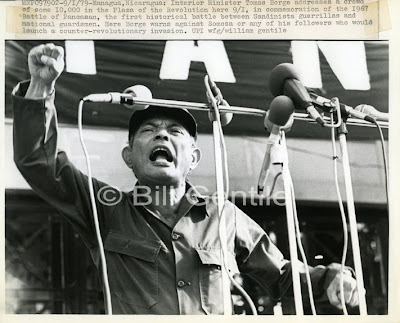
1 SEPTEMBER 1979 — Only weeks after the Sandinistas seized power, Interior Minister Tomas Borge gave an address in Managua’s Plaza de la Revolucion, warning that “dias terribles y gloriosos” – terrible and glorious days — were ahead. I remember the speech well because of its ominous tone.
The only living founder of the Sandinista National Liberation Front (FSLN), Borge knew that Nicaragua’s deposed ruling class and the United States government would not accept a new Nicaraguan government that promised the redistribution of wealth and a foreign policy independent of Washington dictates.
And Borge was right. The administration of Ronald Reagan re-organized the command structure of Somoza’s defeated National Guard and set up training camps across Nicaragua’s northern border with Honduras. These camps became receiving, recruiting and training grounds for Nicaraguans disaffected with the rule of the Sandinista government, which became increasingly harsh partly as a result of pressure exerted by the Reagan administration. From these camps, the “contras” staged attacks into Nicaraguan territory. By the time a regional peace accord was signed in the late 1980s, another 30,000 Nicaraguans would die.
Perhaps Borge was only partly right. Perhaps those days following his speech were more terrible than they were glorious.
The image making and storytelling skills I acquired during this conflict are the foundation of my role today as backpack journalist. As we mark the 30th anniversary of the Sandinista Revolution, I’m posting scans of some of the original images I made for UPI during that war, and explaining their significance. I do this in recognition and gratitude to the country and people who have given me so much. Thank you.
